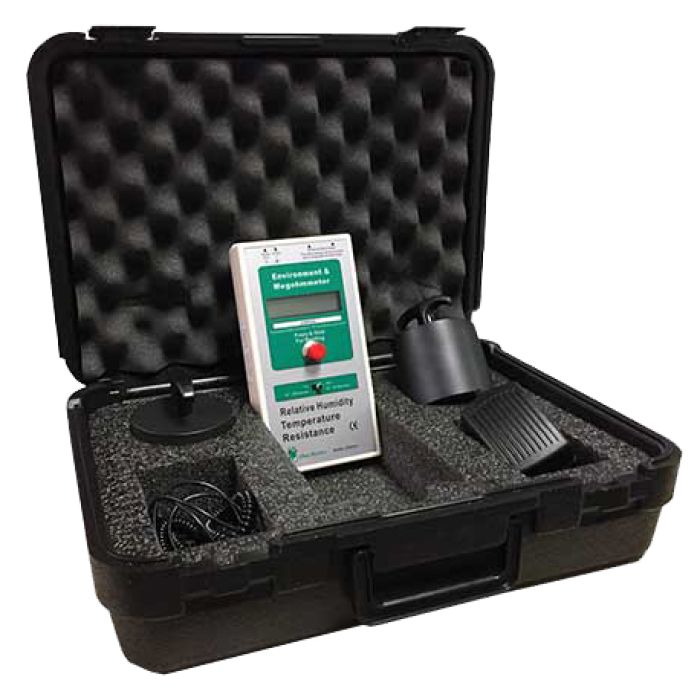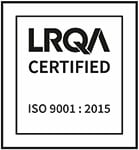
Digital Surface Resistance Test Kit
The SRM500K is a digital surface resistance test kit designed to test all conductive, anti-static and static dissipative surfaces for electrical resistivity / resistance according to EOS/ESD, CECC, ANSI, ASTM test procedures.
- Complete testing kit for resistance measurements such as resistance-to-ground, resistance point-to-point, and volume resistance
- 10v and 100v range voltage selection
- Automatic zeroing and power shut off
- Tests temperature and humidity
- Two 5 lb. disk probes
- Built-in resistivity probes
- Carrying case
The Ohm METRICS' SRM500K is a digital surface resistance test kit that accurately measures the resistance of materials and performs ESD tests such as resistance-point-to-point and resistance-to-ground. The Ohm METRICS SRM500K has 10V and 100V selectable test voltage and measures ambient temperature and humidity. The kit is suitable for factory audits, material and test lab evaluations and compliance testing.
The SRM500K kit includes a surface resistance meter with a digital readout, parallel probes on the back for quick measurements, two 5lb disc probes for more specific tests, all in an easy to carry case.
Meets or exceeds requirements of ANSI ESD-S20.20 and ESDA Standard 1.1-2006
How to Test ESD Surfaces:
There are three primary measurements for evaluating a work surface; Resistance Point to Point (RTT - also known as Resistance Top to Top), Resistance to Groundable Point (RTGP) and Resistance to Ground (RTG).
Resistance to Ground Measurement:
This measurement is made using a 5 lb. electrode connected to the positive terminal of the resistance meter. The electrode is placed on the work surface in the most heavily used area. The negative lead is connected to electrical ground. This measurement assures that the mat is connected to AC Equipment Ground. Test at 10 volts, and if the measurement exceeds 1.0 x106 ohms, switch to 100 volts.
If the resulting RTG measurement is within your required limits, no further work surface testing is required and you can proceed to the next work surface. Should the measurements still exceed your limits you will then want to conduct a Resistance to Groundable Point (RTGP) measurement.
Resistance to Groundable Point Measurement:
This measurement is similar to the RTG measurement except that the negative lead is attached to the grounding point (snap) of the work surface. The testing is performed using 100 volts when the expected resistance is greater than 1.0 x 106 ohms.
Should this measurement provide a reading that is within your requirements the problem is somewhere between the snap and AC Ground. If this measurement also provides a value that exceeds your requirements, then there may be a problem with the work surface. A point-to-point resistance measurement can be done to verify the performance of the work surface material.
RTT - Resistance Point-to-Point:
This measurement is made using two 5 lb. electrodes. The electrodes are placed 10" apart on the work surface in various locations.
The testing is performed using 100 volts when the expected resistance is greater than 1.0 x106ohms. If the reading meets your requirements, there is possibly a connection problem with the groundable point. Should the reading exceed your limits the work surface is likely faulty and should be replaced. It is important that RTG measurements be made regularly. The frequency of testing is dependent up on internal requirements and testing history. RTG testing must be performed even if constant monitoring is in place, as constant monitors verify ground connection of the worksurface, but not the performance of the worksurface.
| Sell Unit | Pair |
|---|---|
| PAC Item Code | I174442 |
| MFG Part Number | SRM500K |
| Brand | Transforming Technologies |



